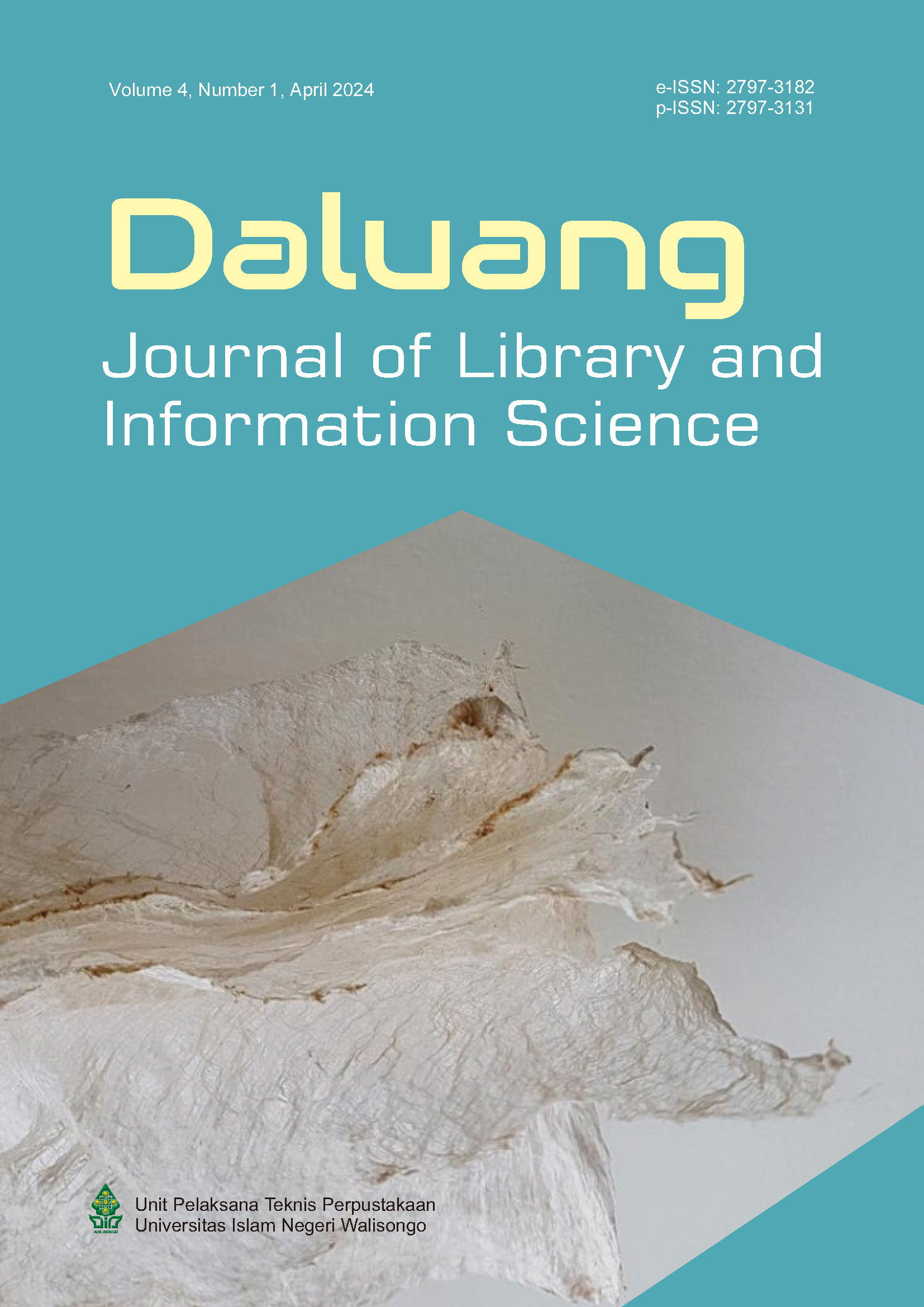Transactionology of publication under reference and periodical sections using ICT and coding
Main Article Content
Abstract
Purpose. The project intends to use a qualitative approach to investigate the state and procedures of present transaction processes to pinpoint inefficiencies. Integrating ICT and coding solutions will be formulated and examined through prototyping to evaluate their feasibility and effectiveness. By concentrating on user behaviour and section-specific dynamics, the study offers a more analytical and data-driven approach to library management by leveraging Python's analytical capabilities and extracting quantitative data from transaction logs. Future funding can be directed towards required and necessary subjects by using library management's data to research trends and student requirements. This research can potentially transform library operations and ultimately enhance everyone's user experience for all.
Methodology. The approach entails the utilization of ICT and programming to conduct a qualitative examination of data about the transaction aspects of publications.
Results and discussion. By utilising ICT and coding, publication transaction data is consolidated efficiently in the preferred format, paving the way for advanced analytics and strategic insights with minimal human input.
Conclusions. This study contributes to the examination, implementation, and consolidation of automated transaction recording across various sections of a library, with a prospective expansion towards integration with library management systems such as KOHA, Evergreen, Easylib, and Software for University Libraries (SOUL).
Downloads
Article Details
This work is licensed under a Creative Commons Attribution-NonCommercial-NoDerivatives 4.0 International License.
Articles published in Daluang Journal of Library and information Science are available under Creative Commons Attribution Non-Commercial No Derivatives Licence (CC BY-NC-ND 4.0). Authors retain copyright in their work and grant Daluang Journal of Library and information Science right of first publication under CC BY-NC-ND 4.0. Users have the right to read, download, copy, distribute, print, search, or link to the full texts of articles in this journal, and to use them for any other lawful purpose.
Articles published in Daluang Journal of Library and information Science can be copied, communicated and shared in their published form for non-commercial purposes provided full attribution is given to the author and the journal. Authors are able to enter into separate, additional contractual arrangements for the non-exclusive distribution of the journal's published version of the work (e.g., post it to an institutional repository or publish it in a book), with an acknowledgment of its initial publication in this journal.
This copyright notice applies to articles published in Daluang Journal of Library and information Science volumes 1 onwards.
References
EASYLIB. (2023). Easylib. http://bhadra.easylib.net/?page_id=401
Evergreen ILS. (2024). Evergreen. https://evergreen-ils.org/
KOHA. (2024). Koha library software. https://koha-community.org/
Lestari, P. A. I., & Cahyani, N. (2023). Application of the association rule method based on book borrowing patterns in Bojonegoro Regional Libraries. Journal of Computer Networks, Architecture and High Performance Computing, 5(2), 751–759. https://doi.org/10.47709/cnahpc.v5i2.2893
Lund, B., Agbaji, D., Bissadu, K. D., & Chen, H. (2023). Python for information professionals: How to design applications to capitalize on the data explosion.
NIELIT. (2023). National Institute of Electronics & Information Technology. https://www.nielit.gov.in
Embarcadero. (2024). PyScripter. https://www.embarcadero.com/free-tools/pyscripter/free-download
Python. (2024). What is Python? Executive Summary. https://www.python.org/doc/essays/blurb/
Rafique, A., Ameen, K., & Arshad, A. (2023). E-book data mining: Real information behavior of university academic community. Library Hi Tech, 41(2), 413–431. https://doi.org/10.1108/LHT-07-2020-0176
Schlomann, A., Seifert, A., Zank, S., Woopen, C., & Rietz, C. (2020). Use of Information and Communication Technology (ICT) devices among the oldest-Old: Loneliness, anomie, and autonomy. Innovation in Aging, 4(2). https://doi.org/10.1093/geroni/igz050
Sekar S., Solayappan, A., Srimathi J., Raja, S., Durga S., Manoharan, P., Hamdi, M., & Tunze, G. B. (2022). Autonomous transaction model for e-commerce management using blockchain technology. International Journal of Information Technology and Web Engineering, 17(1), 1–14. https://doi.org/10.4018/IJITWE.304047
SOUL. (2021). Software for university libraries. https://soul.inflibnet.ac.in/about.php
Sharon, R, Divya, N. & Akshaya, R. (2022). Library management system using python on web design. SEYBOLD REPORT, 17(2), 243–258. https://doi.org/10.5281/zenodo.6879668
Van Rossum, G. (2022). Introduction. In An Introduction to Python. Shroff Publishers & Distributors Pvt. Lt.
Zollanvari, A. (2023). Machine learning with Python. Springer International Publishing. https://doi.org/10.1007/978-3-031-33342-2



